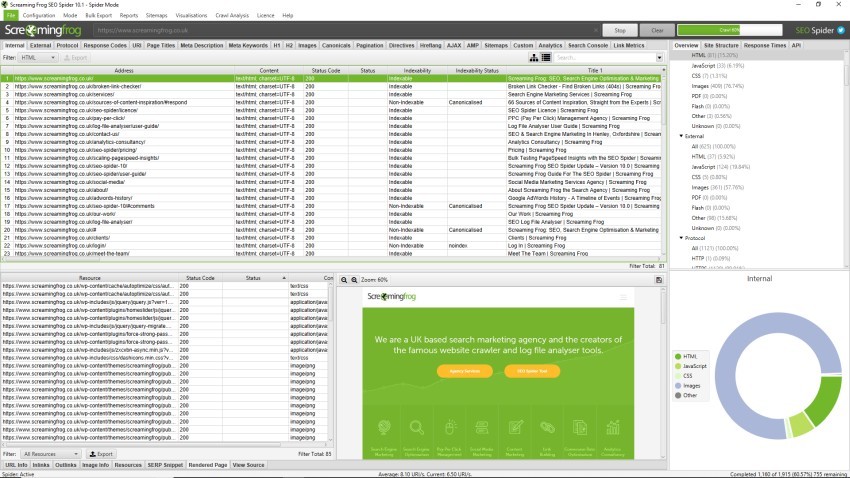From time to time, your site needs a redesign. Trends always come and go, UI/UX features change, so it’s essential that you keep up with them.
Thus, there is the possibility that you’ll make mistakes in the web redesign process. Some mistakes are costly, which will make you lose all that you have achieved so far.
You know how important organic search is. If you’re losing out your traffic and rankings, you’ll have fewer leads and fewer sales.
Luckily, there are ways how you can avoid this risk and not commit an SEO disaster through the process of your website design.
First, Backup!
Since you’re trusting computers to store and save all your vital information, you should make it a habit of backing everything up.
Backing up is crucial, especially when it comes to working with sensitive and vital information. That way, you’ll be able to keep your database and old files safe whenever you need them.
Only if you back everything up can you set up your new site, and replace the older files.
Audit Your Site

When redesigning your site, utilize Google Analytics to check your current rankings. It will give you insights on the parts of your website that you need to work on and improve. You’ll also know which pages users visit and land on whenever they do a quick Google search.
Depending on your preference, there are also other tools (besides Google Analytics) that you can use.
Doing an audit is crucial because it gives you insight into which strategies work best. Knowing which ones caused damage to your site is vital for making pre-emptive measures. That way, you can minimize your web redesign’s negative effect on turning your visitors into customers.
Review all the pages of your existing site then know the pages that have a high click-through rate (CTR).
Moreover, look for low-performing pages that have broken external and internal links, have duplicate or missing page titles, and missing H1 tags and meta descriptions.
Collect Your URL List
Your old site has URLs that you shouldn’t forget to record. Utilize these URLs for redirection and reference when you transfer to a new website.
Without the list, there’s a possibility that you would lose the reputation that you’ve built with search engines.
You can start by making a record of broken links and your existing redirects. But keep in mind that whenever the URL structure changes, you should avoid redirect chains. That’s because it can affect your current site performance, which will cost you your rankings.
Make a New Site Map
Making a brand new site map or updating your existing one will make it easy for search engines to identify new URLs, as well as other changes. After you’re done redesigning your website, crawl it to ensure that the URLs are correctly ranked and indexed.
Creating a new site map will also allow you to see if anything is missing, and the steps that you need to take to replace it and make it better.
Implement 301 Redirects
As much as you can, your URL structure should remain the same. However, there are instances that it’s not possible, and you need to carry out changes.
This step can be tricky because if done the wrong way, it can cause severe problems with your SEO.
So, implement 301 Redirects for all your pages with new URLs to ensure that users will land on the right page.
Take note that a lot of people miss this step. It’s because most of them think that setting up a 301 redirect is already enough to inform search engines to index your site.
However, creating a new site map will let search engines discover new URLs. It will also give them more information about the structure of your website.
Remember that whenever users interact with your brand online, they’ll always expect a seamless experience.
So if you’re not quite sure how to do this step correctly, it’s best to call a professional in a website redesign. You can also study tutorials like Google’s SEO Starter Guide.
Inform Google for the Changes
The final stage that you need to consider when you’re moving your domain is to inform search engines that your old website has moved. You need to verify your site in Google webmaster tools, then request for a change of address for the previous site.
After your site has launched, it’s crucial that you keep track of its performance.
See to it that you closely monitor any drop of traffic, any loss of keyword ranking, indexing of web pages, and crawl errors. It can be done when you utilize Google webmaster tools.
Do’s and Don’ts to Consider:
- Don’t completely take down your site for a weeks time. When you do so, you’ll be experiencing a massive drop in traffic before your website has even launched.
- For your brand new site, optimize the content in all of your pages.
- Perform keyword analysis. Know the keywords from your old site where the traffic is coming from. Then, place it on your new website.
- Avoid using 302 because they’re merely temporary redirects. It doesn’t do anything for your SEO efforts. Should you need to redirect some links, use 301 instead.
- Avoid deleting pages. If you can, only change the page’s content, or redirect it with another page.
The Bottomline
Redesigning your site is more than just incorporating new visuals trends or building a new interface.
It takes proper planning, the right strategy, and regular checks to ensure that everything’s in place and your SEO is intact.
Creating a good and working website not only improves your SEO rankings, and your audience, but it also gives you better results in the long run.
Also, don’t feel if your redesigned site is undergoing some fluctuation. In the beginning, this is entirely normal and expected even.
You’ll also avoid making them from happening if you have implemented the advice we’ve given on this article. As a result, you’re able to keep your SEO intact.
About the Author
John Vuong is the sole owner of Local SEO Search Inc. one of the best SEO in Toronto. John’s mission is to help local business owners improve their online influence so they can dominate their industry. With his business acumen and innate understanding of the local business landscape, John writes blogs that delve on how to customize SEO campaigns based on client needs.

Ready To Upgrade Your Logistic Solution?
Speak to Floship ecommerce logistic consultant about improving your global support chain today





